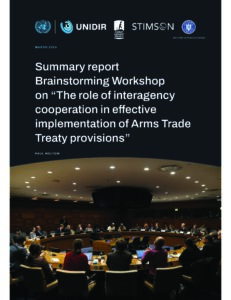Executive Summary
Russia’s full-scale invasion of Ukraine in February 2022 has spurred a dramatic global surge in arms transfers to Kyiv, raising important questions around transparency in the global arms trade. This policy paper explores how these questions have been addressed in the context of Arms Trade Treaty (ATT) annual reporting.
Less than a year after the invasion, Ukraine had already become the world’s third-largest major arms importer. Given the unprecedented volume of arms transfers to Ukraine, it is essential that governments have a clear picture of the type and quantity of weapons flowing into the region to facilitate accurate assessments of military capabilities and intentions, inform diplomatic initiatives, and enhance efforts to monitor weapons use and ensure accountability for human rights and international humanitarian law violations. Greater insight into international arms transfers to Ukraine will also have significant long-term benefits, including facilitating efforts to prevent and address arms diversion long after the fighting ends. Despite the inherent risks of such a large-scale military aid effort, some governments have expressed concerns about the consequences of disclosing the details of their arms exports to a country in the midst of an armed conflict—particularly one whose adversary has threatened to treat support for its military effort as an act of war. Moreover, the lack of transparency surrounding arms exports to Russia—which procures arms from opaque and illicit sources—may raise questions as to whether it is appropriate to reveal potentially sensitive information surrounding Ukraine’s arms procurement.
Questions around arms trade transparency for transfers to Ukraine are particularly salient for ATT States Parties, not only because of their transparency commitments but also because of the outsized role they have played in supplying Ukraine with conventional arms following Russia’s invasion. Twenty-six of the 29 countries that exported major arms to Ukraine in 2022, according to estimates from the Stockholm International Peace Research Institute (SIPRI), were ATT States Parties (notably absent from the list is the United States—the largest provider of arms to Ukraine).2 Together, ATT States Parties accounted for 61 percent of all major arms exports to Ukraine in 2022.3




